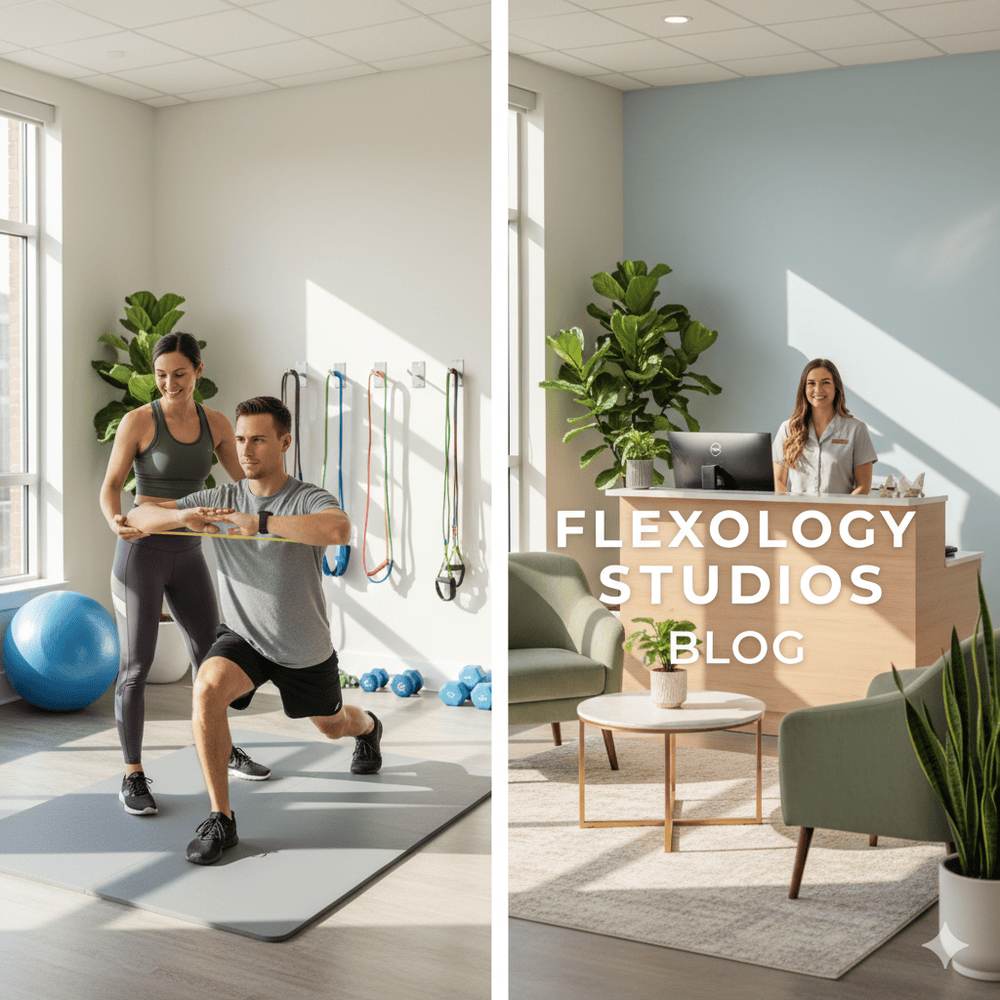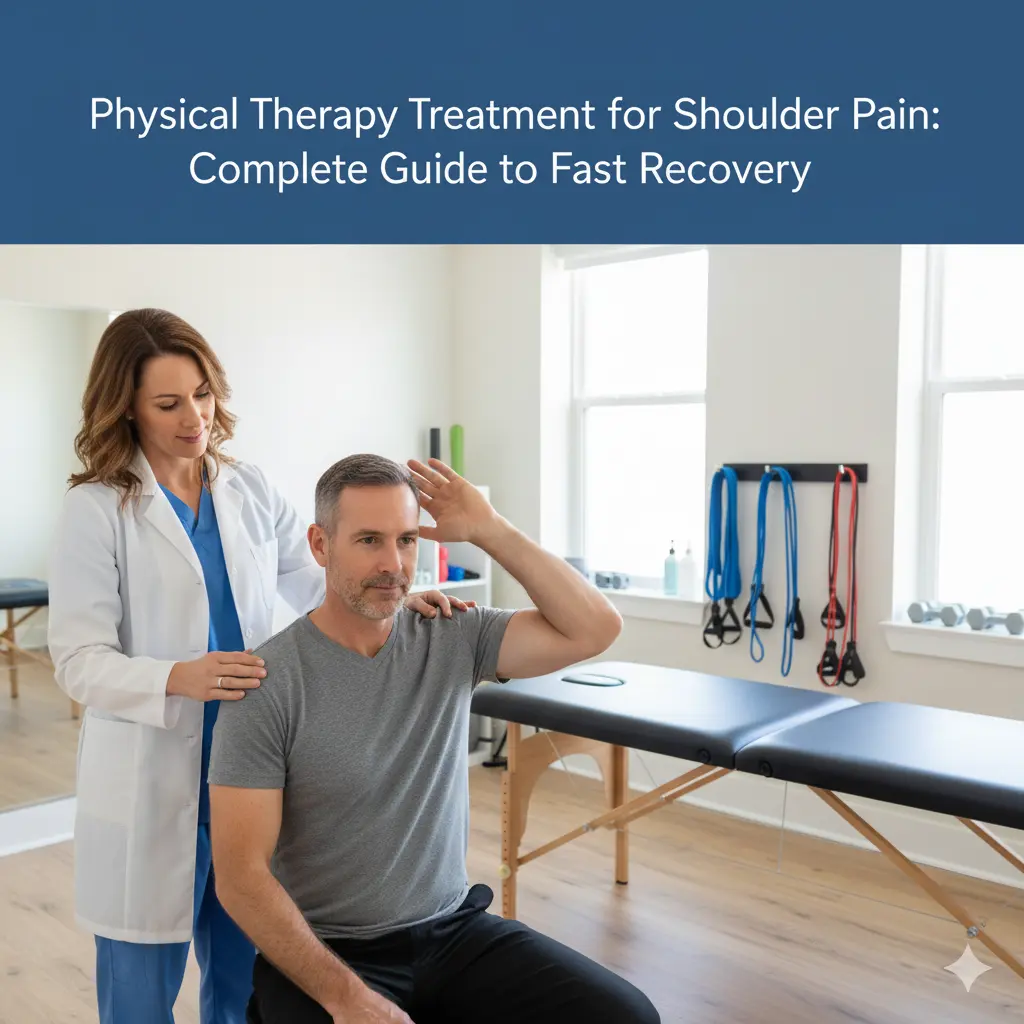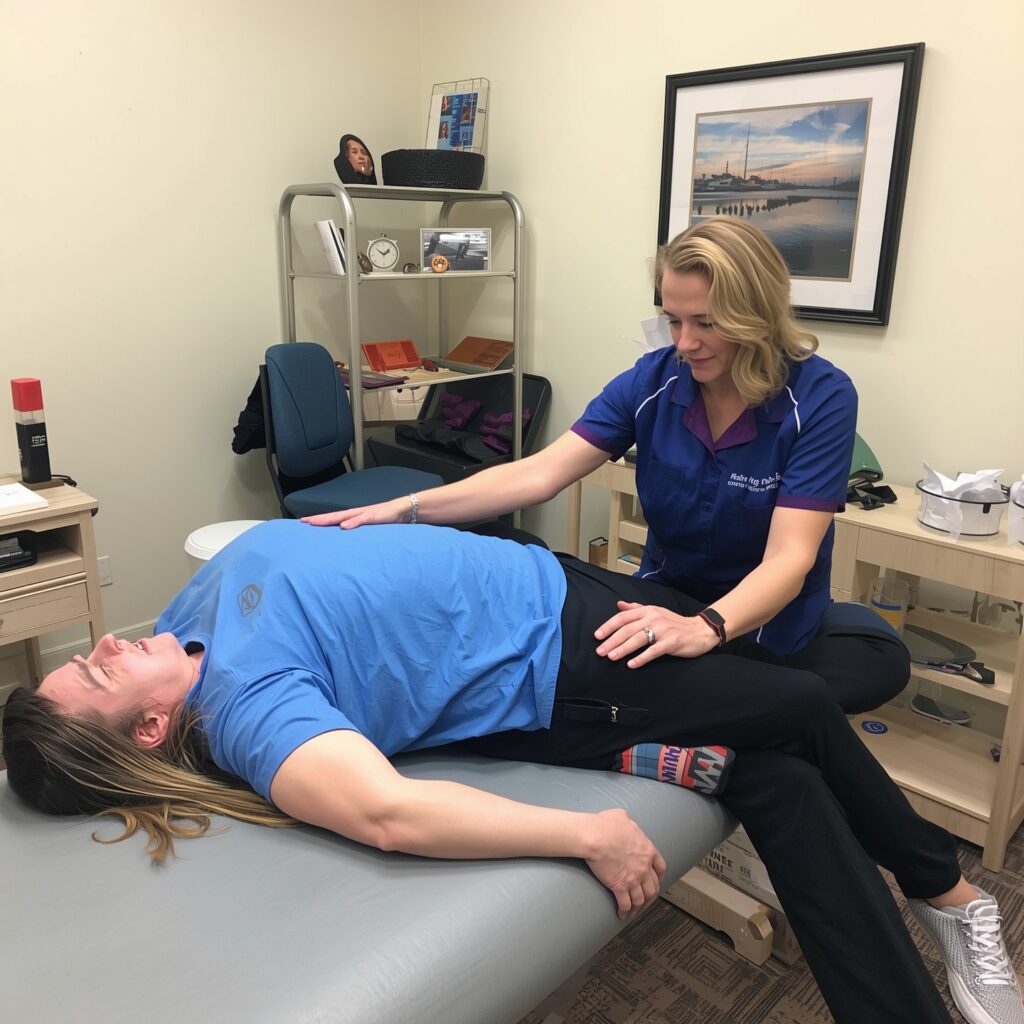Cerebral palsy (CP) is a lifelong condition that affects movement, posture, and muscle control. It happens when the developing brain experiences damage, often before or during birth. CP does not get worse over time, but its symptoms can change as a person grows.
Physical Therapy Treatment for Cerebral Palsy is one of the most effective and non-invasive ways to support people living with this condition. Therapy focuses on movement, mobility, and independence. Unlike surgery or heavy medication, it uses targeted exercises and guided practice to improve everyday life.
The main goals of therapy include:
- Helping individuals move more freely.
- Preventing complications like joint contractures or scoliosis.
- Supporting independence at home, school, and in the community.
- Improving overall quality of life.
Families often describe physical therapy as a foundation of care. It builds strength, boosts confidence, and gives children and adults with CP a greater chance to participate in daily activities. [Internal Link: cerebral palsy support programs] can also connect families with additional resources. For a detailed overview of CP, see the [External Link: CDC Cerebral Palsy Overview].
Cerebral Palsy and Its Everyday Challenges
Cerebral palsy affects each person differently. Some may have mild motor delays, while others face severe challenges with mobility and independence. The type of CP often determines the symptoms and therapy needs.
Types of CP include:
- Spastic CP: The most common type. Muscles are stiff, making movement difficult.
- Athetoid/Dyskinetic CP: Involuntary movements occur, often twisting or writhing.
- Ataxic CP: Balance and coordination are affected, leading to shaky or unsteady movements.
- Mixed CP: A combination of symptoms from more than one type.
Common symptoms include:
- Muscle stiffness or spasticity.
- Poor balance and posture.
- Delayed motor skill development.
- Trouble with fine motor control, such as writing or buttoning clothes.
In addition to motor difficulties, many individuals face secondary complications, including:
- Scoliosis and joint contractures from uneven muscle pull.
- Chronic pain and fatigue from abnormal muscle use.
- Higher risk of falls due to poor balance.
These challenges affect daily routines, education, and social participation. A child with spastic CP may struggle to keep up with classmates during physical activities. An adult with ataxic CP may find tasks like cooking or dressing difficult without assistance.
Physical therapy helps address these everyday challenges. Therapists use personalized exercises and strategies to improve coordination, reduce stiffness, and build endurance. Over time, patients often gain better mobility, which supports greater independence in daily life.
Physical Therapy Treatment for Cerebral Palsy is not just about exercises. It is about creating a supportive environment that allows children and adults to thrive, despite the condition’s challenges.
What Physical Therapy Aims to Achieve
The goals of Physical Therapy Treatment for Cerebral Palsy vary depending on age, symptoms, and individual needs. For children, therapy often focuses on motor skill development and preventing complications. For adults, the emphasis may be on maintaining mobility, managing pain, and staying active.
Key goals include:
- Improving strength and flexibility: Stronger muscles support better posture and coordination.
- Enhancing mobility: Training helps individuals move more independently, from walking to using mobility aids effectively.
- Correcting posture and preventing deformities: Therapy reduces the risk of scoliosis or joint contractures.
- Reducing pain and spasticity: Techniques such as stretching, movement training, and assisted exercises help manage muscle stiffness.
- Supporting independence: Therapy encourages participation in daily routines, school, or work.
- Family education: Caregivers learn exercises and safe handling techniques to continue support at home.
These goals give patients a chance to live more actively, despite physical challenges. By focusing on both immediate needs and long-term development, physical therapy for CP children and adults becomes a central part of care.
Core Techniques in Physical Therapy
Therapists use a mix of traditional exercises and modern evidence-based methods to improve mobility and independence. Each program is designed around the patient’s unique condition and daily needs.
A. Traditional Approaches
These methods remain the foundation of physical therapy for CP children and adults:
- Stretching and range-of-motion exercises: Prevent muscle tightness and joint contractures.
- Strengthening programs: Build endurance in major muscle groups to support mobility.
- Balance and coordination training: Improve stability, reduce falls, and encourage safe movement.
- Gait training: Use of parallel bars, treadmills, or walking aids to practice safe walking.
- Functional skill practice: Activities like climbing stairs or grasping objects.
- Postural alignment and positioning: Support correct sitting, standing, and walking posture.
B. Modern Evidence-Based Practices
Research continues to improve therapy methods. Today’s approaches use structured, targeted training supported by science.
- Neurodevelopmental Treatment (NDT): Focuses on posture and movement patterns, teaching the body more efficient ways to move.
- Constraint-Induced Movement Therapy (CIMT): Encourages use of a weaker limb by restricting the stronger one, improving balance between both sides.
- Task-oriented training: Repeats daily activities, like reaching for a cup, to reinforce functional skills.
- Virtual reality and gaming therapy: Uses interactive technology to make training engaging while improving motor skills.
- Aquatic therapy: Warm water reduces stress on joints, making exercises easier and less painful.
- Treadmill with body-weight support: Helps children and adults practice walking in a safe, controlled environment.
C. Advanced Tools and Technology
Modern therapy now includes devices that enhance outcomes and encourage independence.
- Robotic-assisted therapy: Supports repetitive, precise movements during gait training.
- Electrical stimulation (FES/TENS): Activates specific muscles to reduce spasticity and improve control.
- Wearable devices and motion sensors: Track movement and progress in real time.
- 3D-printed orthotics and braces: Custom devices designed for comfort and posture correction.
These tools are changing the way mobility training for cerebral palsy is delivered. Many programs combine traditional approaches with advanced technology, offering patients better outcomes than ever before. For more insights, see the [External Link: NIH Cerebral Palsy Therapy Studies].
Physical Therapy Treatment for Cerebral Palsy is most effective when it combines traditional methods, evidence-based practices, and modern tools. The right mix depends on the patient’s symptoms and therapy goals. Talk to a licensed physical therapist for personalized support.
Assistive Devices in Therapy
Assistive devices play a vital role in Physical Therapy Treatment for Cerebral Palsy. They support movement, reduce strain, and help patients participate in everyday activities. The choice of device depends on the severity of CP symptoms and individual goals.
Common assistive devices for CP include:
- Orthotics for cerebral palsy: Devices like ankle-foot orthoses (AFOs) stabilize joints, correct alignment, and prevent contractures.
- Mobility aids: Walkers, crutches, and wheelchairs increase independence and safety.
- Customized seating systems: Designed for comfort, proper posture, and long-term support.
Case Example: A 7-year-old child with spastic CP used AFOs combined with gait training. Within six months, the child’s walking endurance improved significantly, reducing the need for a walker during short distances.
Assistive devices also evolve with modern technology. 3D-printed orthotics and smart wheelchairs are now part of advanced therapy. These innovations not only improve mobility but also enhance participation in school and community activities.
Personalized Therapy Programs
Every individual with CP has unique challenges. That is why therapy must be personalized. A one-size-fits-all program cannot meet the diverse needs of patients.
Steps in creating personalized programs include:
- Comprehensive assessment: Evaluating motor skills, balance, posture, and daily needs.
- Individualized treatment plan: Tailored exercises and therapy goals based on strengths and weaknesses.
- Multidisciplinary teamwork: Collaboration with occupational therapists, speech therapists, and doctors.
- Home exercise programs: Simple daily routines taught to caregivers for consistent practice.
For instance, a teenager with athetoid CP may need task-oriented training and aquatic therapy, while a child with spastic CP might benefit more from stretching, orthotics, and gait training. Personalized programs maximize progress and prevent complications.
Families can explore [Internal Link: rehabilitation programs] to learn how therapy teams create individualized plans.
Benefits of Physical Therapy for CP
Physical Therapy Treatment for Cerebral Palsy brings measurable benefits. These improvements extend beyond physical strength and mobility, influencing emotional and social well-being.
Key benefits include:
- Greater independence and mobility.
- Stronger muscles with less stiffness.
- Prevention of contractures, scoliosis, and other complications.
- Active participation in school, sports, and social life.
- Improved confidence and emotional health.
To illustrate how therapy outcomes vary, here is a quick comparison:
| Traditional Benefits | Modern Benefits |
| Improved flexibility and strength | Advanced gait training with robotics |
| Better posture and balance | Real-time tracking with wearables |
| Reduced spasticity through stretching | Virtual reality for engaging skill practice |
| Support from basic orthotics | Customized 3D-printed orthotics |
This table shows how combining traditional and modern methods creates a more effective therapy plan. While traditional techniques remain essential, advanced tools allow for faster progress and greater independence.
In short, the benefits of physical therapy reach far beyond movement. They improve the overall quality of life and give individuals with CP the chance to live with more freedom and confidence.
Challenges and Limitations
While Physical Therapy Treatment for Cerebral Palsy is one of the most effective non-invasive approaches, it does have challenges. Understanding these limitations helps families set realistic expectations and remain consistent with care.
Key limitations of CP therapy include:
- Long-term commitment: Therapy requires years of consistent practice, which can be tiring for children and caregivers.
- Not all patients achieve walking: For some with severe CP, therapy focuses more on comfort, posture, and independence rather than walking.
- Family motivation: Progress depends heavily on caregiver involvement and encouragement at home.
- Financial barriers: Advanced therapies, robotic devices, or aquatic programs may not be affordable or available in every region.
Expert note: According to the World Health Organization, over 80 million people worldwide live with conditions requiring long-term rehabilitation, including CP. Many lack access to advanced resources. This highlights the global challenge of ensuring therapy is available and affordable.
Despite these limitations of CP therapy, consistent effort leads to meaningful improvements in mobility, independence, and overall quality of life.
Emerging Research and Future Trends
The future of cerebral palsy treatment is expanding with exciting innovations. Researchers are combining traditional therapy with advanced medical science and digital tools to create more effective care.
Trends shaping therapy include:
- Stem cell therapy with rehabilitation: Early trials show promise for improving motor control when combined with physical therapy.
- AI rehab devices: Smart robotic systems powered by artificial intelligence personalize gait training and monitor progress in real time.
- Virtual reality (VR) and augmented reality (AR): Gamified therapy sessions keep children motivated while improving motor skills.
- Wearables for real-time tracking: Devices monitor movement, spasticity, and endurance, giving therapists accurate feedback.
Stat insight: A 2023 clinical review found that robotic-assisted gait training led to significant walking improvements in nearly 60% of children with CP compared to traditional therapy alone.
These trends show that the next phase of Physical Therapy Treatment for Cerebral Palsy will blend technology with hands-on therapy. While accessibility remains a concern, the future holds strong potential for more personalized and effective treatments.
Guidance for Families and Caregivers
Family involvement is one of the strongest predictors of success in Physical Therapy Treatment for Cerebral Palsy. Therapists may guide exercises, but daily support often comes from parents, siblings, and caregivers.
Key caregiver support for CP includes:
- Active involvement: Attend therapy sessions to learn proper handling and techniques.
- Daily home exercises: Support consistent practice outside the clinic.
- Encouragement: Motivate children to try new skills and celebrate small wins.
- Promoting independence: Let individuals attempt tasks like dressing or feeding, even if they need extra time.
- Emotional support: Positive reinforcement helps build confidence and reduce frustration.
Families also benefit from caregiver training and community resources that share practical tips for managing challenges at home.
Success Stories and Real-Life Progress
Progress in CP therapy is often measured in milestones that transform daily life.
Case Example 1: A 9-year-old with spastic CP struggled with walking. After six months of robotic-assisted gait training and AFO support, he could walk across his classroom without help. His confidence soared, and he became more active in school activities.
Case Example 2: A 15-year-old with ataxic CP used aquatic therapy. The reduced pressure in water helped her strengthen leg muscles and improve balance. After a year, she could stand and walk short distances without falling.
These stories highlight a critical point, therapy may not “cure” CP, but it fosters growth, independence, and meaningful achievements. Families are reminded to focus on progress, not perfection.
Conclusion
Physical Therapy Treatment for Cerebral Palsy is not a short-term fix but a lifelong support system. It combines traditional exercises, advanced technology, and strong family involvement to improve mobility, independence, and quality of life.
Consistency, patience, and caregiver support are just as important as therapy sessions themselves. With the right guidance, individuals with CP can achieve significant progress and enjoy active participation in school, work, and community life.
Empowering takeaway: With persistence and modern therapy, people with cerebral palsy can live more independently and reach their fullest potential.
FAQs
What is the main goal of Physical Therapy Treatment for Cerebral Palsy?
The primary goal is to improve mobility, strength, and independence while preventing complications like contractures or scoliosis.
Can children with CP learn to walk through physical therapy?
Yes, many children improve walking ability with therapy, though outcomes vary by CP type and severity.
What assistive devices are used in therapy for CP?
Common devices include orthotics, walkers, crutches, wheelchairs, and customized seating systems.
How often should therapy sessions take place?
Most patients benefit from 2–4 sessions per week, supported by daily home exercises.
How does family involvement affect therapy success?
Caregiver support ensures consistency, motivation, and practice at home, leading to better long-term results.



